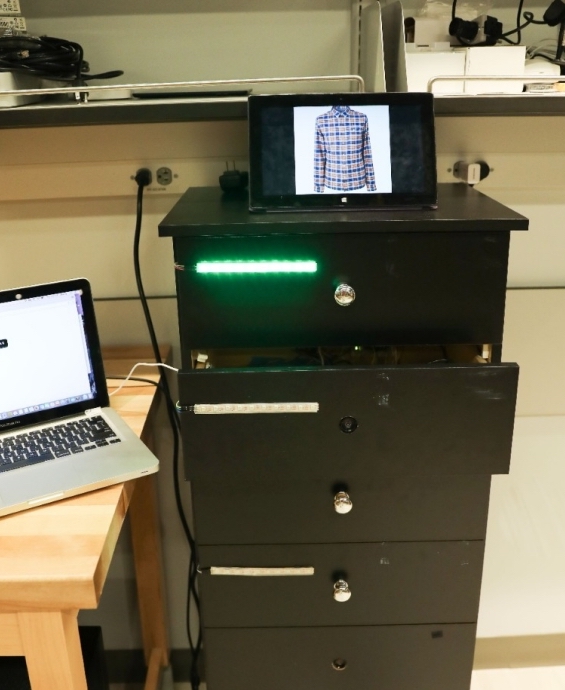
It goes without saying that getting dressed is one of the most critical steps in our daily routine. But long practice has made it second nature, and people suffering from dementia may lose that familiarity, making dressing a difficult and frustrating process. This smart dresser from NYU is meant to help them through the process while reducing the load on overworked caregivers.
It may seem that replacing responsive human help with a robotic dresser is a bit insensitive. But not only are there rarely enough caregivers to help everyone in a timely manner at, say, a nursing care facility, the residents themselves might very well prefer the privacy and independence conferred by such a solution.
 “Our goal is to provide assistance for people with dementia to help them age in place more gracefully, while ideally giving the caregiver a break as the person dresses – with the assurance that the system will alert them when the dressing process is completed or prompt them if intervention is needed,” explained the project’s leader, Winslow Burleson, in an NYU news release.
“Our goal is to provide assistance for people with dementia to help them age in place more gracefully, while ideally giving the caregiver a break as the person dresses – with the assurance that the system will alert them when the dressing process is completed or prompt them if intervention is needed,” explained the project’s leader, Winslow Burleson, in an NYU news release.
DRESS, as the team calls the device, is essentially a five-drawer dresser with a tablet on top that serves as both display and camera, monitoring and guiding the user through the dressing process.
There are lots of things that can go wrong when you’re putting on your clothes, and really only one way it can go right — shirts go on right side out and trousers forwards, socks on both feet, etc. That simplifies the problem for DRESS, which looks for tags attached to the clothes to make sure they’re on right and in order, making sure someone doesn’t attempt to put on their shoes before their trousers. Lights on each drawer signal the next item of clothing to don.
 If there’s any problem — the person can’t figure something out, can’t find the right drawer or gets distracted, for instance — the caregiver is alerted and will come help. But if all goes right, the person will have dressed themselves all on their own, something that might not have been possible before.
If there’s any problem — the person can’t figure something out, can’t find the right drawer or gets distracted, for instance — the caregiver is alerted and will come help. But if all goes right, the person will have dressed themselves all on their own, something that might not have been possible before.
DRESS is just a prototype right now, a proof of concept to demonstrate its utility. The team is looking into improving the vision system, standardizing clothing folding and enlarging or otherwise changing the coded tags on each item.

